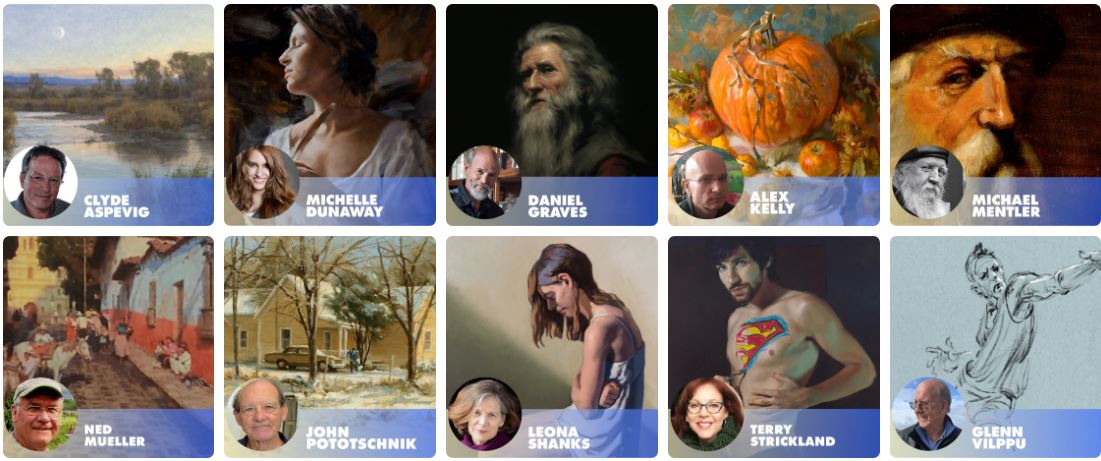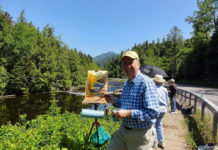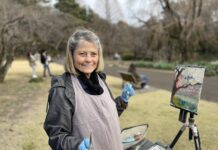Enjoy a recap of the 2nd Annual Pastel Live, an unforgettable virtual event for artists of all levels of painting with pastels. This year, we welcomed a new co-host: Gail Sibley, Editor of Pastel Today!
To begin, here’s what one of our attendees had to say on Day 3 of Pastel Live:
“What a few days this has been,” said artist Anna Bryant Dolly. “I am certainly not ready for today to be the end of Pastel Live! While I love what I do, the context in which I do it makes it mostly just a job, not an exploration of art (contract pet portraits – not just straight commissions – it’s piece work). Pastel Live has successfully pulled me out of the stressors of that job and reminded me in a big way what art is to me and that is so much more than what I can squeeze into a tiny 6-inch canvas.
“I have so much more to learn and am thankful for that … I never want to reach the end of learning. Thank you all – faculty, staff, and participants, all of you, for being part of a dynamic that I won’t ever forget and will always treasure. I’m sure I’m not the only one who will be going through replays over and over to reinforce all the goodies I’m discovering.”
And, thank you to our incredible sponsors for their informational sessions at Pastel Live this year: Blick Art Materials, Savoir-Faire, and the Laguna Plein Air Painters Association.
(If you missed Pastel Live, make sure you sign up today for our next virtual art conference: Realism Live, which includes a variety of subjects and faculty plein air painters such as Clyde Aspevig!)
Landscape Session Highlights from Pastel Live
See the highlights from each day at our sister site, PastelToday.com.
It’s a fact: Having drawing skills can make your pastel process easier. Christine Debrosky explained the relationships between drawing and pastel painting, as well as perspective, and values. She started her demo by sharing a value drawing, which is the plan for the painting, and then began using charcoal before getting into color to paint an inviting summer landscape.

“It’s never too late to start your artistic journey,” said Jane McGraw-Teubner, who began painting with pastels when she was 49. Jane taught us how to creatively use a photo reference so that instead of letting your reference dictate the end result, you can put yourself into the painting.

One of the subjects Doug Dawson enjoys painting is the night scene. In his demo, he covered some of the principles he uses to create the illusion of nighttime and techniques that he employs with any subject in a pastel painting.

The best way to know what colors to pick and choose for your pastel painting is to “play with the color,” said Richard Suckling, explaining that it’s an intuitive process that’s often based on feeling to lead you to the correct color. He added that the more often you do it, the better your sense of color will become.

Bethany Fields said she often likes to paint a little bit bigger than what she plans to be her finished, framed painting. For example, in her demo painting of gorgeous clouds over the Palo Duro, Texas, landscape, she used a 12 x 12-inch surface, with plans to frame it as a 10 x 12, or even a 9 x 12.

Pastelist Bruce Gomez is self-taught, coming to us with degrees in political science, romance languages, and constitutional law concentration. He notes that these have nothing to do with art, and that “if I can do it, anybody can do it.” In his demo, he went over his pastel surfaces, the grid process he uses, and his “double sketch” technique.

Since perspective is a common challenge for artists, Nancie King Mertz led us through the various types, including atmospheric, linear, one-point, and more.

Brenda Boylan helped us gain a better understanding of light and shadow within a scene, walking us through her color choices and strokes each step of the way. Here, we see her adding details that help tell the story without distracting the eye from the focal point.

Richard Wilson welcomed us into his studio, where he showed us how he uses an underpainting, creates strong light and shadow while using both hard and soft pastels, and adds texture to the surface while painting a figure in a landscape.

Do your underpaintings look like “colorless globs?”
“A strong underpainting will lead to a stronger painting,” said Karen Margulis. During her workshop, we explored the mystery and the magic of starting a pastel with a watercolor underpainting.

In a mixed media demo, Albert Handell explained how to start with a two-color watercolor underpainting and then use pastel to create a work inspired by nature. “I’ve been working on trees lately; the twig formations intrigue me,” he said. Adding a detail here and there, he reflected, “Isn’t that lovely?”

For a limited time, replays are available for this year; you can also join us live for next year’s Pastel Live virtual art conference! Simply visit PastelLive.com now and register for the best personal instruction and live interactions with artists from all over the world.
Remember, sign up today for our next virtual art conference: Realism Live, which includes a variety of subjects and faculty plein air painters such as Clyde Aspevig, John Potoschnik, and more (shown below). You don’t want to miss it!




